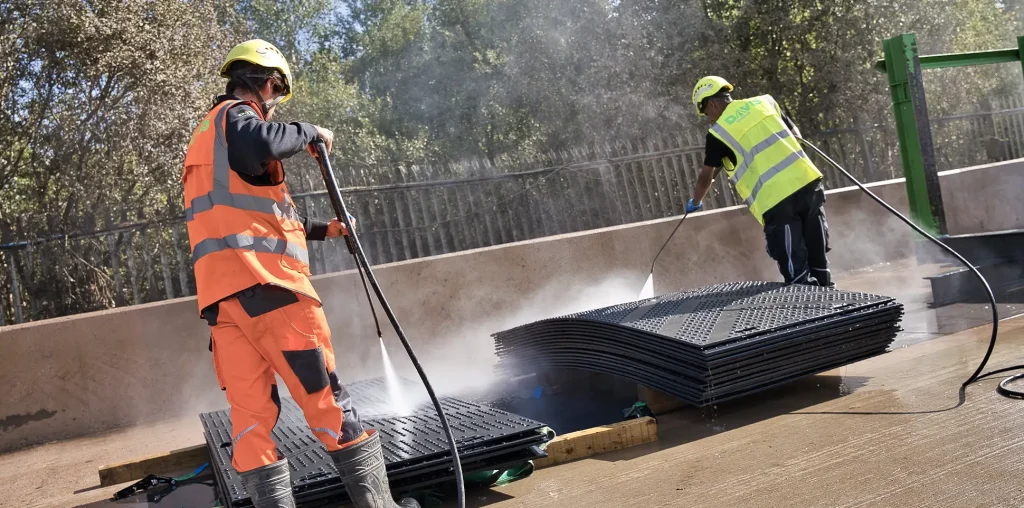
The use of plastic is often frowned upon and we cannot ignore the negatives which surround the material. However, in the ground protection industry, particularly for the use of equipment mats, it is often the better, safest, most sustainable and environmentally friendly option compared to its alternatives. Overall, construction matting promotes the positive use of HDPE plastic. Let’s break down the most common problems associated with HDPE plastic equipment mats and explore how we challenge or combat them.
Due to its robust nature, plastic is difficult to dispose of. It often ends up polluting our soils, rivers and oceans then causes harm to the creatures that inhabit them. To help address this problem, we only use post-industrial recycled plastic equipment mats. We use mats that were previously waste, generated from the manufacturing process.
Some argue that HDPE would disintegrate if left for thousands of years, but this has not been demonstrated or proven yet. So ultimately, it is not compostable, which of course is not good for the planet. To combat this issue, we recycle and repurpose all our unwanted plastic equipment mats. We never send them to landfill.
Household plastic, which we are all familiar with, is almost impossible to repair. We often end up throwing away any of our plastic possessions which crack or split. Plastic becomes sharp and quite dangerous when broken. In the construction industry, HDPE plastic is also difficult to repair however it is almost impossible to break too. Our plastic ground protection mats are very flexible and follow ground contours. Crafted from robust, high-grade HDPE, we confidently assure you that they will not crack or bend.
Plastic equipment mats are often subject to rubber shoe soles and tyre marks however our plastic equipment mats are all black to prevent them from looking worn and carrying obvious stains. We also regularly jetwash our trackway mats to keep them clean and prevent stains and surface damage.

Often, when something is low value, we don’t preserve it like we would a high-value item. Plastic is notoriously cheap to make and often sold cheaply too. In our sector, our plastic equipment mats differ from this characterization. While they serve as a cost-effective alternative to aluminium trackway and may not fetch a high scrap value, they are crafted with high-quality plastic.
“As the world strives for a more sustainable future, the role of HDPE is expected to increase. Innovations in recycling, biodegradable materials and light weight continue to drive the HDPE market forward. HDPE focuses on reducing environmental impacts and meeting the needs of various industries, so it continues to be the material of sustainable tomorrow.”
– Anishaluccas, Medium
We will continue to promote the positive use of HDPE plastic ground protection mats and help combat the issues the material poses. We aim to keep up to date with government and industry guidance on how to create the most sustainability in our practices using HDPE plastic equipment mats.
Contact us today to arrange a free no obligation quotation for your next project or event. Please complete the form below and one of our team of experts will contact you within 24hrs.
Alternatively contact us on 01698 352751 for an immediate response.